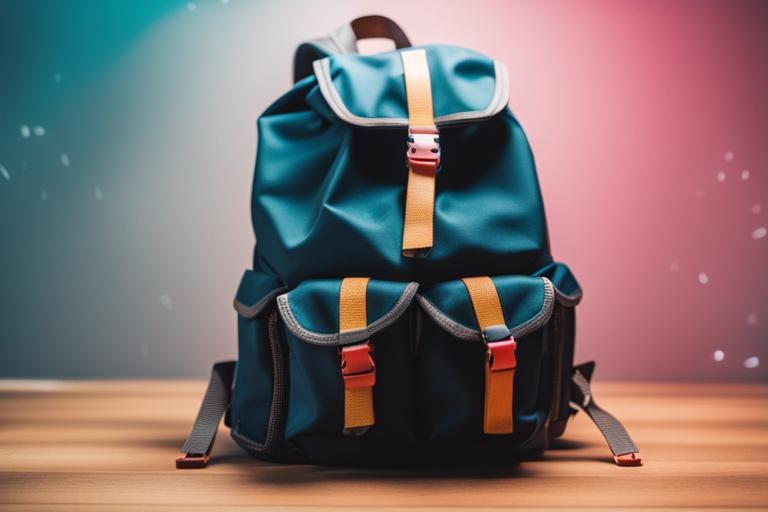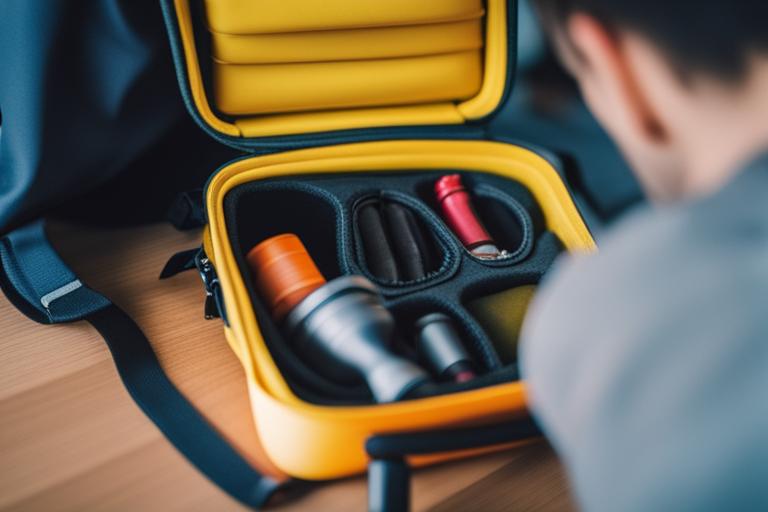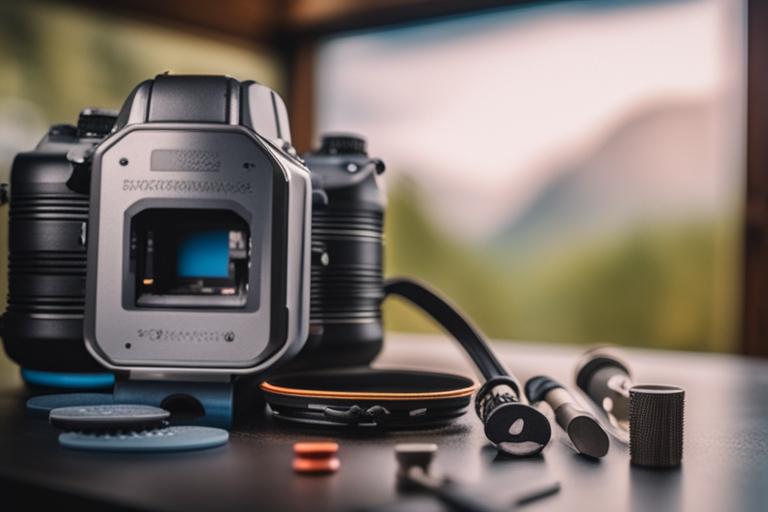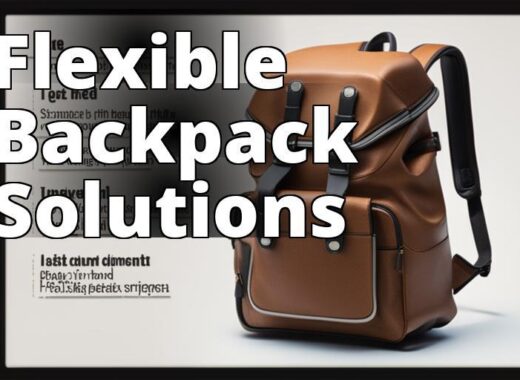If you’re wondering what to do with broken backpacks, you’re not alone. Backpacks are essential items that we rely on to carry our belongings, but over time, they can become damaged or worn out. So, what should you do with a broken backpack? In this guide, we’ll provide you with various options on how to deal with broken backpacks. We will discuss how to assess the damage, attempt to repair it, find a professional repair service, donate it to charity, recycle it, repurpose it, sell it for parts, or use it for storage.
What to Do with Broken Backpacks
Learn what to do with broken backpacks by assessing the damage, attempting to repair, finding a professional repair service, donating to a charity or organization, recycling, repurposing, selling for parts, or using it for storage. By choosing one of these options, you can extend the life of your backpack and reduce waste.

Assessing the Damage
Before deciding what to do with your broken backpack, you need to assess the damage. This will help you determine whether it can be repaired or needs to be replaced.
Identify the Broken Parts
The first step is to identify the broken parts of your backpack. Is it the zipper, a strap, or the fabric? Once you have identified the broken parts, you can proceed to the next step.
Determine the Extent of the Damage
The next step is to determine the extent of the damage. Is it a minor tear or a major rip? Is the damage limited to one area or spread throughout the backpack? This will help you decide whether it can be repaired or needs to be replaced.
Decide Whether to Repair or Replace the Backpack
Based on the extent of the damage, you need to decide whether to repair or replace the backpack. If the damage is minor, you can attempt to repair it yourself. However, if the damage is major or spread throughout the backpack, it may be more cost-effective to replace it.

Attempting to Repair
If you have decided to repair your backpack, there are a few steps you need to follow.
Identify the Tools and Materials Needed
The first step is to identify the tools and materials needed for the repair. This may include a sewing machine, needle and thread, fabric glue, or replacement parts such as zippers or straps.
Follow Online Tutorials or Videos to Guide You Through the Process
There are many online tutorials and videos that can guide you through the repair process. These resources can be very helpful, especially if you are new to backpack repair.
Repair Minor Damages
Minor damages such as broken zippers or ripped seams can be repaired easily with a needle and thread or fabric glue. These repairs are relatively simple and can be done by anyone.
Repair Major Damages
Major damages such as a broken frame or torn fabric may require more advanced repair skills or professional help. It is important to assess your own skills before attempting to repair major damages.

Finding a Professional Repair Service
If you do not feel comfortable repairing your backpack yourself, you can find a professional repair service.
Research Professional Repair Services
The first step is to research professional repair services in your area. Look for companies that specialize in backpack repair or have experience repairing backpacks.
Compare Prices and Services
Once you have identified a few repair services, compare their prices and services. Look for a company that offers quality repairs at a reasonable price.
Check for Reviews and Recommendations
Before choosing a repair service, check for online reviews and recommendations. This can help you avoid low-quality services and ensure that you get the best value for your money.
Consider the Cost Versus the Value of the Backpack
When deciding whether to use a professional repair service, consider the cost versus the value of the backpack. If the backpack has sentimental value or is expensive, it may be worth investing in professional repairs.

Donating to a Charity or Organization
If your backpack is beyond repair or you no longer need it, you can donate it to a charity or organization.
Research Organizations That Accept Backpacks
The first step is to research organizations that accept backpacks. Look for charities or organizations that distribute backpacks to those in need.
Check for Donation Policies and Requirements
Before donating your backpack, check for donation policies and requirements. Some organizations may have specific requirements or restrictions on the types of backpacks they accept.
Donate Your Backpack to a Cause You Support
When choosing an organization to donate your backpack to, consider a cause that you support. This can make the donation more meaningful and impactful.
Consider the Tax Benefits of Donating
Donating your backpack to a charity or organization can also provide tax benefits. Be sure to keep a record of your donation and check with a tax professional for more information.

Recycling
If your backpack is beyond repair and cannot be donated, consider recycling it.
Identify Materials in Your Backpack That Can Be Recycled
The first step is to identify materials in your backpack that can be recycled. This may include metal zippers, plastic buckles, or nylon fabric.
Find a Recycling Center That Accepts These Materials
Once you have identified recyclable materials, find a recycling center that accepts them. Look for a center that is convenient and accepts a wide range of materials.
Follow the Recycling Guidelines and Requirements
When recycling your backpack, be sure to follow the recycling guidelines and requirements. Improperly recycling materials can harm the environment and waste resources.
Consider the Environmental Impact of Recycling
Recycling your backpack can have a positive environmental impact by reducing waste and conserving resources. Consider the environmental benefits of recycling when deciding what to do with your broken backpack.
Repurposing
If you are feeling creative, you can repurpose your backpack into something new and useful.
Use Your Backpack’s Straps
One creative way to repurpose your backpack is to use its straps to make a guitar strap or camera strap. This can be a fun and unique way to give new life to your backpack.
Use the Fabric
Another way to repurpose your backpack is to use its fabric to make a pillow or cushion. This can be a great way to add a personal touch to your home decor.
Be Creative and Come Up With Your Own Ideas
The possibilities for repurposing your backpack are endless. Be creative and come up with your own ideas based on your skills and interests.
Consider the Value and Usefulness of the Repurposed Item
When repurposing your backpack, consider the value and usefulness of the repurposed item. Make sure that it is something you will use and enjoy.
Selling for Parts
If your backpack has parts that are still in good condition, you can sell them for parts.
Identify Parts of the Backpack That Can Be Salvaged
The first step is to identify parts of the backpack that can be salvaged. This may include buckles, zippers, or straps.
Research Online Marketplaces for Selling Backpack Parts
Once you have identified salvageable parts, research online marketplaces for selling backpack parts. Look for reputable websites that specialize in selling outdoor gear.
Set a Reasonable Price and Be Honest About the Condition of the Parts
When selling backpack parts, set a reasonable price and be honest about the condition of the parts. This can help you get the best value for your backpack parts and ensure that buyers are satisfied with their purchase.
Consider the Time and Effort Involved in Selling the Parts
Selling backpack parts can be time-consuming and require effort. Consider the time and effort involved when deciding whether to sell your backpack parts.
Using it for Storage
If your backpack is still in good condition but no longer useful for carrying items, you can use it for storage.
Use Your Backpack to Store Camping Gear or Other Items
One way to use your backpack for storage is to store camping gear or other items. This can help keep your items organized and easily accessible.
Keep Your Items Organized and Easily Accessible
When using your backpack for storage, make sure to keep your items organized and easily accessible. This can make it easier to find what you need when you need it.
Protect Your Items From Dust and Moisture
Using your backpack for storage can also help protect your items from dust and moisture. This can be especially important for items that are sensitive to these elements.
Consider the Practicality and Convenience of Using the Backpack for Storage
When deciding whether to use your backpack for storage, consider the practicality and convenience of doing so. Make sure that it fits your storage needs and is easy to access.
Personal Story: Giving New Life to an Old Backpack
My name is Sarah and I’ve had my favorite backpack for years. It’s been with me through countless adventures, but over time, the straps started to fray and the zippers began to stick. I was torn between repairing it or getting a new one, until I stumbled upon a DIY tutorial for repairing a backpack.
I gathered the necessary tools and materials and followed the step-by-step instructions. It was challenging at times, but I was determined to give my beloved backpack a new life. After a few hours of work, I had successfully replaced the frayed straps and fixed the broken zippers.
Not only did I save money by not having to buy a new backpack, but I also felt a sense of pride and accomplishment in repairing it myself. Plus, my backpack now had a unique personal touch.
Since then, I’ve repaired several other backpacks for myself and friends. It’s become a hobby of mine and I love the feeling of giving new life to old items. Repairing your backpack not only reduces waste, but it also allows you to hold onto sentimental items for longer.
Final Thoughts
In conclusion, a broken backpack doesn’t have to be the end of its usefulness. By following the steps outlined in this guide, you can extend the life of your backpack and reduce waste. Remember to always consider the value and usefulness of your backpack and make a decision that aligns with your values and needs.
The author of this comprehensive guide on what to do with broken backpacks is an outdoor enthusiast with extensive experience in repairing and repurposing outdoor gear. With a degree in Environmental Science, they have also conducted research on the environmental impacts of outdoor activities and the importance of sustainable practices.
Their passion for the outdoors and commitment to sustainability led them to explore different ways to extend the life of broken backpacks and reduce waste. They have successfully repaired and repurposed many of their own backpacks, as well as those of friends and family, and have shared their knowledge and experience through online tutorials and workshops.
In addition, the author has conducted extensive research on professional repair services, donation policies and recycling guidelines, and has consulted with experts in the field. They have also volunteered with organizations that provide outdoor gear to underprivileged youth, and have seen firsthand the impact of donating quality backpacks to those in need.
With their expertise in repairing, repurposing, donating, and recycling backpacks, the author provides readers with a comprehensive guide that offers practical and sustainable solutions for dealing with broken backpacks.




